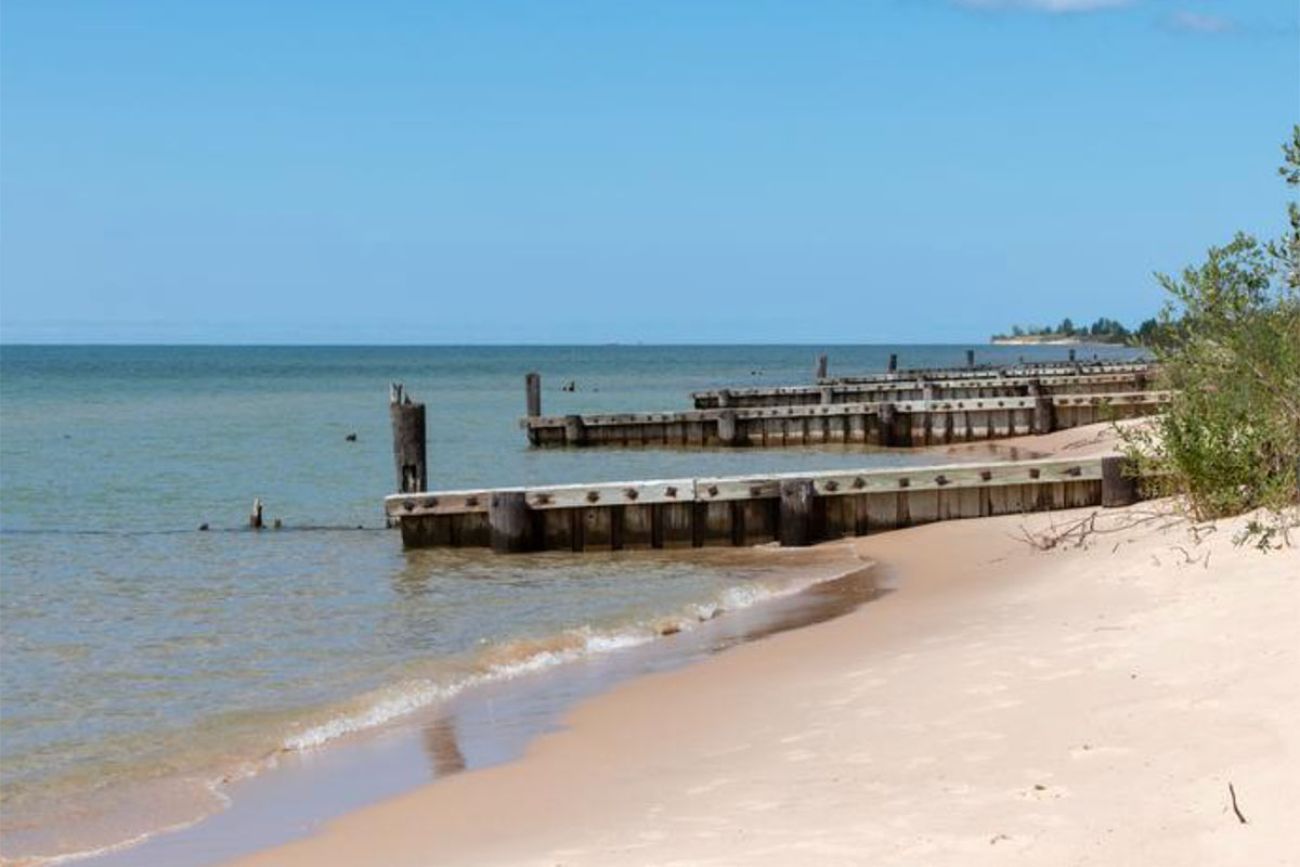A tsunami-like wave on Lake Michigan? What to know about a ‘meteotsunami’

- A minor ‘meteotsunami’ occurred this week on Lake Michigan near Ludington and Holland
- The rare weather event caused 2-foot waves at the beaches in Ludington and Holland State Park
- Meteotsunamis are large waves triggered by air pressure. The last one occurred in Michigan in 2018
Severe rain and thunderstorms in West Michigan this week caused a rare weather event — a meteotsunami in Lake Michigan.
Meteotsunamis are large waves typically triggered by disturbances in the air pressure like severe thunderstorms, unlike tsunamis, which are caused by seismic activity like earthquakes, according to the National Weather Service’s National Oceanic and Atmospheric Administration.
The meteotsunami in Lake Michigan occurred Tuesday at beaches near Ludington and Holland, according to the NWS. The oceanic weather event caused waves that reached 2 feet tall, said Joe Ceru, meteorologist for the National Weather Service’s Grand Rapids office.
“A line of severe thunderstorms moved through southwest lower Michigan,” Ceru said. “Along that system, there was rapidly changing air pressure that caused the water levels along the lakeshore to fluctuate rapidly.”
Related:
- In urban 'heat islands' like Detroit, staying cool means getting creative
- The Great Lakes are warming ahead of the start of summer
- Fireflies resurge in Michigan. This year's show is ‘best it’s going to be’
A camera at Holland State Park caught the intensity of the waves.
During a meteotsunami, heavy storms cause waves that move toward the shore and coastal features like a shallow continental shelf and inlet or bay intensify the waves.
Scientists are just beginning to understand the phenomenon, according to NOAA. Meteotsunamis can reach heights of 6 feet or more and can occur in various parts of the world, including the Gulf of Mexico, the Atlantic Coast, and the Mediterranean and Adriatic Seas, NOAA says.
“They (meteotsunamis) can occur in all five Great Lakes but most often occur in Lake Michigan,” Ceru said. “The most meteotsunamis occur typically from April to July.”
Meteotsunamis are rare in Michigan, the last one occurred in April 2018 when winds during a thunderstorm reached 71 mph causing an 8-foot wave near Ludington. The last meteotsunami before that was in 2014.
Michigan Environment Watch
Michigan Environment Watch examines how public policy, industry, and other factors interact with the state’s trove of natural resources.
- See full coverage
- Subscribe
- Share tips and questions with Bridge environment reporter Kelly House
Michigan Environment Watch is made possible by generous financial support from:
Our generous Environment Watch underwriters encourage Bridge Michigan readers to also support civic journalism by becoming Bridge members. Please consider joining today.
See what new members are saying about why they donated to Bridge Michigan:
- “In order for this information to be accurate and unbiased it must be underwritten by its readers, not by special interests.” - Larry S.
- “Not many other media sources report on the topics Bridge does.” - Susan B.
- “Your journalism is outstanding and rare these days.” - Mark S.
If you want to ensure the future of nonpartisan, nonprofit Michigan journalism, please become a member today. You, too, will be asked why you donated and maybe we'll feature your quote next time!






